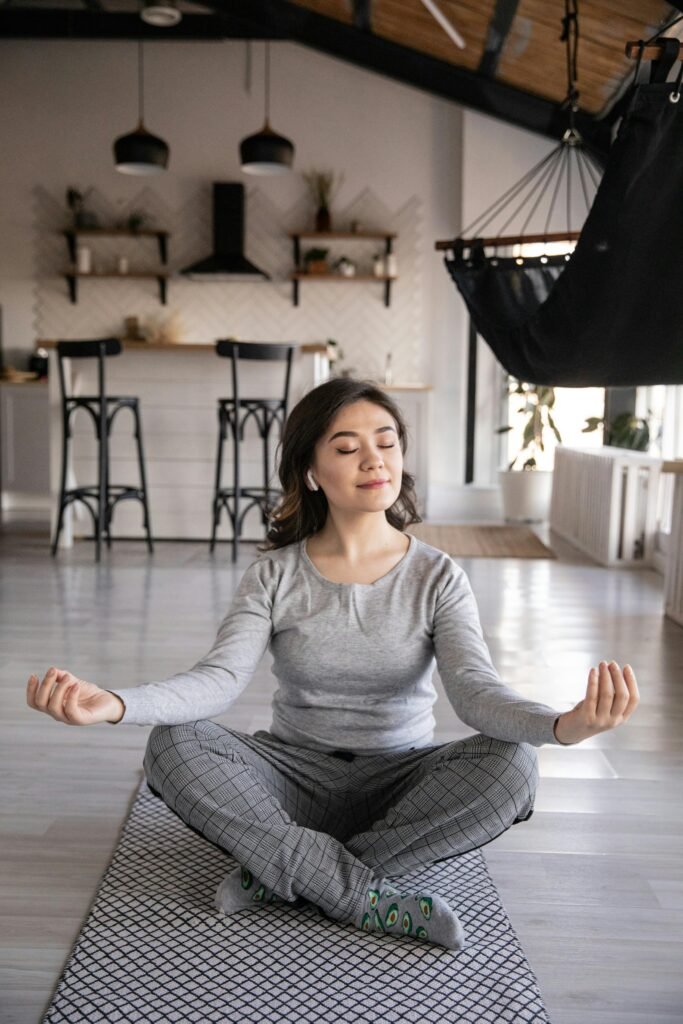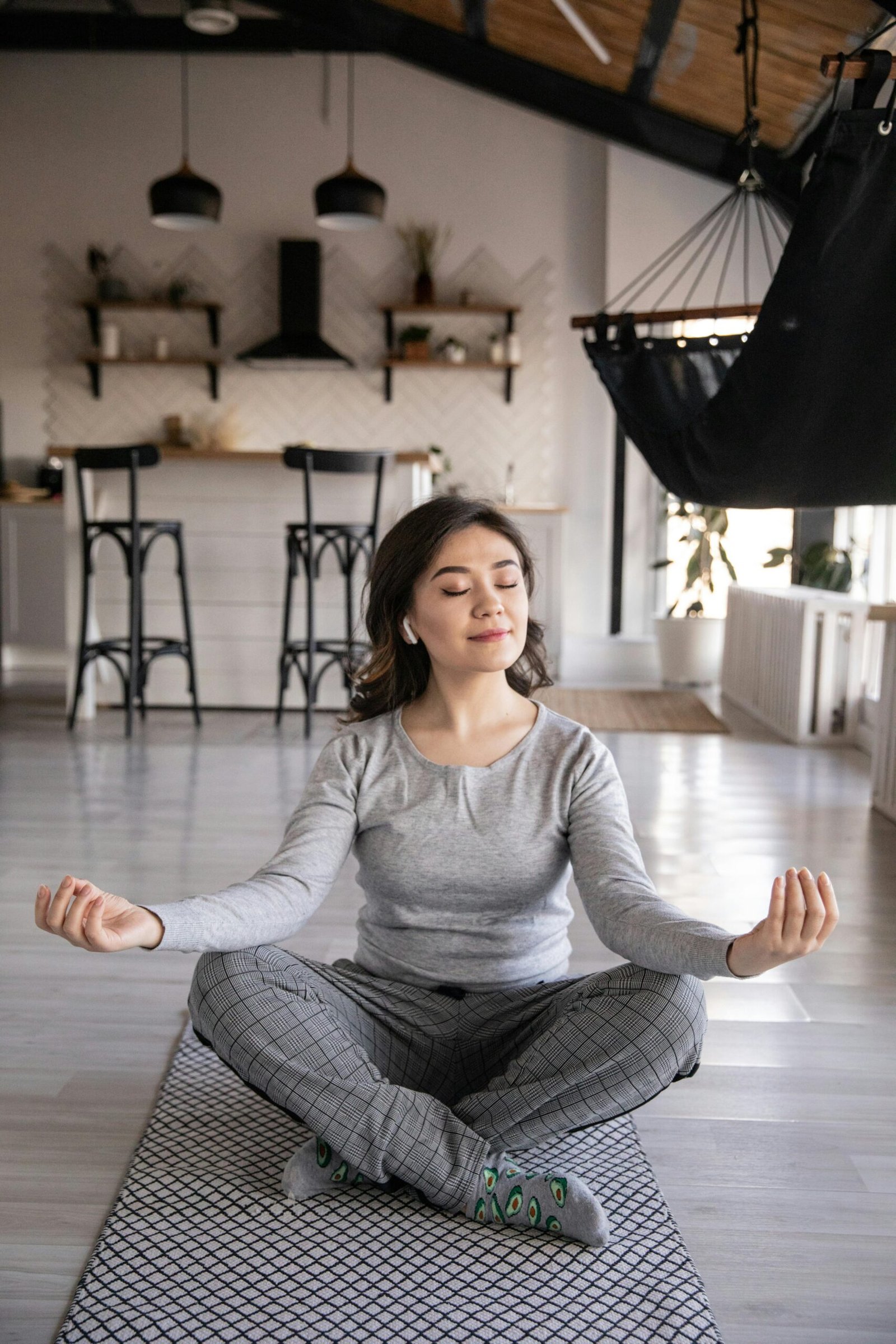Are you looking for a comprehensive and balanced approach to improving your overall well-being? Look no further than Pilates! This holistic fitness practice not only targets and strengthens your body, but also focuses on connecting your mind and spirit. In this article, we will explore the benefits of incorporating Pilates into your routine, and how it can help you achieve a state of mind-body wellness. Additionally, we will delve into the world of Aqua Yoga, a unique variant of Pilates that offers the added benefits of water resistance and deep relaxation. Get ready to transform your fitness journey and embrace a more holistic approach to wellness!

This image is property of images.pexels.com.
What is Pilates?
Pilates is a form of exercise that focuses on strength, flexibility, and overall body awareness. It was developed by Joseph Pilates in the early 20th century and has gained popularity over the years for its ability to improve both physical and mental well-being.
History of Pilates
Joseph Pilates, the creator of Pilates, initially developed the exercise method as a way to rehabilitate injured soldiers during World War I. He believed that a strong mind-body connection was essential for overall health and developed a series of exercises that targeted both the body and the mind. Pilates later immigrated to the United States, where his method gained recognition in the dance and fitness communities.
Principles of Pilates
There are six fundamental principles that form the foundation of Pilates: concentration, control, centering, flow, precision, and breath. These principles guide the practice of Pilates and emphasize the importance of mindful movement, proper alignment, and controlled breathing. By incorporating these principles into each exercise, Pilates practitioners can maximize the benefits of their practice.
Benefits of Pilates
Pilates offers a wide range of benefits for both the body and the mind. From improving posture and increasing core strength to reducing stress and promoting relaxation, Pilates provides a holistic approach to overall well-being. Whether you are looking to enhance your physical fitness, improve your mental clarity, or simply find a gentle form of exercise, Pilates can provide a comprehensive solution.
Holistic Approach to Mind-Body Wellness
Understanding Holistic Wellness
Holistic wellness is an approach to well-being that considers the interconnectedness of the mind, body, and spirit. It recognizes that all aspects of a person’s life can impact their overall health and seeks to address these areas in a comprehensive and integrated manner. Holistic wellness emphasizes the importance of balance, self-care, and self-awareness to achieve optimal health.
Importance of Mind-Body Connection
The mind-body connection refers to the intricate relationship between our thoughts, emotions, and physical sensations. It recognizes that our mental and emotional well-being can greatly influence our physical health, and vice versa. By cultivating a strong mind-body connection, we can better understand and respond to the needs of our bodies, leading to improved overall wellness.
Benefits of Holistic Wellness
Adopting a holistic approach to wellness offers numerous benefits. It can enhance our physical health, reduce stress levels, improve mental and emotional well-being, and promote a greater sense of self-awareness and self-compassion. By addressing all aspects of our health, we can achieve a greater sense of balance and fulfillment in our lives.

This image is property of images.pexels.com.
Pilates as a Holistic Exercise
Mindful Movement
One of the key principles of Pilates is concentration, which encourages practitioners to be fully present and engaged in their movements. This mindful approach to exercise not only improves physical alignment and efficiency but also enhances the mind-body connection. By focusing on each movement and its corresponding sensation, Pilates allows you to cultivate a greater sense of awareness and connection to your body.
Focus on Breathing
Breathing is a fundamental aspect of Pilates and plays a crucial role in each exercise. By coordinating breath with movement, you can enhance the efficiency and effectiveness of your workout. Deep, controlled breathing helps to oxygenate the muscles, improve circulation, and induce a state of relaxation. The integration of breathwork in Pilates promotes relaxation and reduces stress levels, making it a truly holistic exercise.
Improving Flexibility and Strength
Pilates exercises are designed to improve both flexibility and strength. Through a combination of stretching and resistance training, Pilates targets specific muscle groups while also lengthening and elongating the body. This approach promotes balanced muscle development, which is essential for optimal posture and overall physical function. By improving flexibility and strength simultaneously, Pilates helps to create a strong, flexible, and balanced body.
Enhancing Body Awareness
Pilates emphasizes the importance of body awareness, encouraging practitioners to pay attention to how their bodies move and feel. This heightened sense of awareness allows individuals to better understand their body’s limitations and areas of improvement. By becoming more in tune with their bodies, Pilates practitioners can make necessary adjustments to their movements, leading to improved alignment, reduced risk of injury, and greater overall body awareness.
Promoting Balance and Alignment
Proper alignment and balance are key components of Pilates. By focusing on core stability and proper posture, Pilates exercises help to align the body correctly, preventing strain and injury. The balance and stability training provided by Pilates also carry over into everyday life, improving coordination and reducing the risk of falls or accidents. Through the integration of balance and alignment, Pilates supports overall postural health and physical well-being.
Physical Benefits of Pilates
Improves Posture
Poor posture can lead to a variety of physical ailments, including back pain, neck tension, and muscle imbalances. Pilates focuses on strengthening the core muscles, which play a crucial role in maintaining good posture. By improving core strength and overall body awareness, Pilates helps to correct postural imbalances, leading to improved alignment and a more upright posture.
Increases Core Strength
The core muscles, including the abdominals, back muscles, and pelvic floor, are essential for stability and overall body strength. Pilates exercises target and strengthen these core muscles, leading to increased stability, improved balance, and enhanced overall functional fitness. A strong core also supports proper spinal alignment, reducing the risk of back pain and injury.
Boosts Muscle Tone
Pilates is known for its ability to tone and sculpt the muscles without creating bulk. The controlled movements and resistance provided by Pilates exercises help to lengthen and strengthen the muscles, resulting in a lean and toned physique. Pilates targets both the large muscle groups and the smaller stabilizing muscles, creating a balanced and well-defined body.
Enhances Flexibility
Flexibility is essential for maintaining a healthy range of motion and preventing injuries. Pilates incorporates stretching and lengthening exercises that improve flexibility without sacrificing strength. By promoting balanced muscle development and proper alignment, Pilates helps to increase flexibility in a safe and effective way.
Improves Balance
Balance is crucial for everyday activities and overall functional fitness. Pilates exercises focus on stability and coordination, helping to improve balance and proprioception. By challenging the body’s balance in various positions and movements, Pilates helps to strengthen the deep stabilizing muscles that support balance, leading to improved stability and reduced risk of falls.

This image is property of images.pexels.com.
Mental Benefits of Pilates
Reduces Stress and Anxiety
Pilates offers a calming and meditative effect that can help reduce stress and anxiety. The focus on mindful movement and controlled breathing promotes relaxation and encourages a state of mental calmness. By engaging in Pilates, you can create a sense of tranquility and escape from the pressures of daily life.
Enhances Cognitive Function
Engaging in regular physical exercise, such as Pilates, has been shown to enhance cognitive function and improve mental clarity. The mindful nature of Pilates requires focus, concentration, and coordination, all of which can help to stimulate brain activity and boost cognitive function.
Improves Focus and Concentration
Pilates requires concentration and focus to perform the exercises correctly and efficiently. By honing and strengthening your ability to focus, Pilates can improve your concentration both on and off the mat. This enhanced focus can help improve productivity and performance in your daily life.
Promotes Mindfulness
Mindfulness is the practice of being fully present and engaged in the current moment. Pilates, with its emphasis on mindful movement and breath control, is a natural vehicle for practicing and cultivating mindfulness. By incorporating Pilates into your routine, you can develop a greater sense of mindfulness that can positively impact all areas of your life.
Emotional Benefits of Pilates
Increases Self-Confidence
Pilates is a non-competitive form of exercise that is focused on personal improvement rather than comparison to others. As you progress in your Pilates practice and witness the improvements in your strength, flexibility, and overall well-being, your self-confidence naturally increases. This newfound self-confidence can extend beyond your Pilates sessions and positively impact other areas of your life.
Boosts Self-Esteem
Engaging in regular exercise, such as Pilates, has been shown to boost self-esteem and body image. Pilates promotes a positive body image by emphasizing strength, flexibility, and overall health rather than external appearance. By focusing on the capabilities and potential of your body, Pilates can help improve your self-esteem and foster a more positive relationship with yourself.
Enhances Body Image
Pilates, with its emphasis on building a strong, flexible, and balanced body, can enhance body image. By working on improving posture, strength, and overall physical well-being, Pilates practitioners develop a deeper appreciation and acceptance of their bodies. This enhanced body image can lead to greater self-acceptance and a more positive relationship with your physical self.
Promotes Relaxation
The mindful and controlled movements of Pilates, along with the focused breathing techniques, promote a state of relaxation and calmness. Pilates sessions can serve as a form of active meditation, allowing you to release tension and stress while promoting a sense of relaxation and well-being. This relaxation not only benefits your physical body but also provides a space for emotional and mental relaxation.
Pilates for Rehabilitation and Injury Prevention
Safe and Low-Impact Exercise
Pilates is designed to be a safe and low-impact form of exercise, making it suitable for individuals of all fitness levels, including those with injuries or chronic conditions. The controlled movements and emphasis on proper form help to minimize the risk of injury while still providing an effective and challenging workout. Pilates can be adapted to accommodate specific rehabilitation needs, making it an excellent choice for injury recovery and prevention.
Improves Muscular Imbalances
Muscular imbalances can lead to poor posture, decreased range of motion, and an increased risk of injury. Pilates targets these imbalances by focusing on strengthening weak muscles and lengthening tight muscles. Through a combination of stretching and strengthening exercises, Pilates helps to correct these imbalances, leading to improved overall muscular function and reduced risk of injury.
Assists in Injury Recovery
Pilates can be used as a rehabilitation tool to aid in the recovery from various injuries. Its focus on controlled movements, proper alignment, and core stability can help individuals regain strength, flexibility, and mobility after an injury. By working with a qualified Pilates instructor who specializes in rehabilitation, you can develop a customized program that addresses your specific needs and supports your recovery process.
Prevents Future Injuries
By improving muscular imbalances, enhancing core strength, and promoting proper alignment, Pilates can help prevent future injuries. The balanced muscle development and improved body awareness gained through Pilates can reduce the risk of overuse injuries, strains, and other common exercise-related injuries. Pilates also focuses on functional movements that mimic everyday activities, helping to prepare the body for the demands of daily life and reduce the risk of accidents or injuries.
Pilates for Mindfulness and Meditation
Connecting Mind and Body
Pilates is a form of exercise that encourages the connection between the mind and the body. By concentrating on the movements, sensations, and breath throughout the practice, Pilates practitioners can develop a deeper sense of embodiment and awareness. This mind-body connection becomes a gateway to practicing mindfulness and meditation on the mat and beyond.
Incorporating Meditation Techniques
While Pilates is primarily a physical practice, it can be complemented with meditation techniques to enhance relaxation and mindfulness. Incorporating mindful breathing exercises, such as deep belly breathing and breath counting, into your Pilates routine can deepen your mind-body connection and promote a sense of calmness and clarity. These meditation techniques can be integrated into specific exercises or practiced as standalone moments of mindfulness.
Promoting Mindful Movement
Mindful movement is a foundational principle of Pilates. By paying attention to the quality and intention of each movement, you can cultivate a greater sense of mindfulness. Mindful movement involves being fully present, observing your body’s sensations, and moving with conscious intention. By bringing mindfulness into your Pilates practice, you can enhance your mental focus, deepen your mind-body connection, and experience a greater sense of overall well-being.
Cultivating Inner Awareness
Pilates offers a unique opportunity to cultivate inner awareness and foster a deeper understanding of yourself. By tuning in to your body and listening to its cues during each exercise, you can develop a heightened sense of self-awareness. Through this process, you can gain insights into your physical capabilities, limitations, and areas of growth. Cultivating inner awareness through Pilates can extend to other aspects of your life, enabling you to make more informed choices and live with greater mindfulness.
Getting Started with Pilates
Finding a Qualified Pilates Instructor
To ensure a safe and effective Pilates practice, it is essential to work with a qualified Pilates instructor. Look for instructors who have completed reputable Pilates certification programs and have experience working with individuals of various fitness levels and abilities. A qualified instructor will be able to guide you through proper form and technique, tailor exercises to your needs, and provide modifications or progressions as necessary.
Choosing the Right Pilates Equipment
Pilates can be practiced using various types of equipment, including the Pilates reformer, Cadillac, and stability chair. Each piece of equipment offers a unique and challenging workout experience. When starting with Pilates, it is recommended to begin with mat-based exercises, as they require minimal equipment and can be easily done at home or in a studio. As you progress, you may choose to incorporate equipment-based exercises under the guidance of a qualified instructor.
Setting Realistic Goals
Setting realistic goals is key to a successful Pilates practice. Determine what you hope to achieve through Pilates, whether it’s improving flexibility, building core strength, or reducing stress levels. Be sure to set specific, measurable, achievable, relevant, and time-bound (SMART) goals that align with your individual needs and capabilities. By setting realistic goals, you can track your progress and celebrate your achievements along the way.
Creating a Regular Practice
Consistency is key when it comes to Pilates. Aim to practice Pilates regularly, ideally two to three times per week, to experience the full benefits. Whether you choose to attend group classes or practice at home, establishing a regular routine will help you build strength, flexibility, and endurance over time. Consistency also allows for gradual progression in your practice, making it easier to reach your goals and maintain long-term results.
Listening to Your Body
Listening to your body is crucial during a Pilates practice. Each individual is unique, and what works for one person may not work for another. Pay close attention to how your body feels during each exercise and make necessary modifications or adjustments to ensure comfort and safety. If something feels painful or uncomfortable, take a step back and consult with your instructor. Your instructor can guide you in finding variations or modifications that suit your body’s needs.
Integrating Pilates into a Holistic Lifestyle
Combining Pilates with Other Mind-Body Practices
Pilates can be seamlessly integrated with other mind-body practices to enhance overall well-being. Consider combining Pilates with practices such as yoga, meditation, tai chi, or qigong to create a comprehensive routine that supports both your physical and mental health. By incorporating a variety of mind-body practices, you can enjoy a well-rounded and holistic approach to your overall well-being.
Being Mindful in Everyday Activities
Pilates teaches us to be mindful and present in our movements, and this awareness can extend beyond our Pilates practice. Bring the principles of mindfulness and body awareness into your everyday activities, such as walking, sitting, and even eating. By being fully present and engaged in each moment, you can cultivate a greater sense of mindfulness and well-being throughout your day.
Establishing Healthy Habits
In addition to practicing Pilates, establishing other healthy habits can further support your holistic lifestyle. This may include maintaining a balanced diet, getting regular physical activity, prioritizing sleep, managing stress, and fostering positive relationships. By creating healthy habits in various areas of your life, you can promote overall well-being and create a foundation for long-lasting health.
Nurturing the Mind-Body Connection
A holistic lifestyle is built upon nurturing the mind-body connection. Dedicate time each day to engage in practices that promote self-care, self-reflection, and self-compassion. This could involve journaling, practicing gratitude, spending time in nature, or engaging in activities that bring you joy and fulfillment. By nurturing the mind-body connection, you can cultivate a deeper understanding and appreciation of yourself, leading to enhanced overall well-being.
In conclusion, Pilates is a holistic exercise that offers numerous physical, mental, and emotional benefits. By practicing Pilates mindfully and incorporating its principles into your daily life, you can experience improved posture, increased core strength, enhanced flexibility, reduced stress, and enhanced self-confidence. Whether you are new to Pilates or have been practicing for years, the holistic approach of Pilates can support your overall mind-body wellness and contribute to a balanced and fulfilling life.
